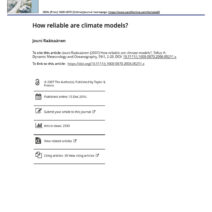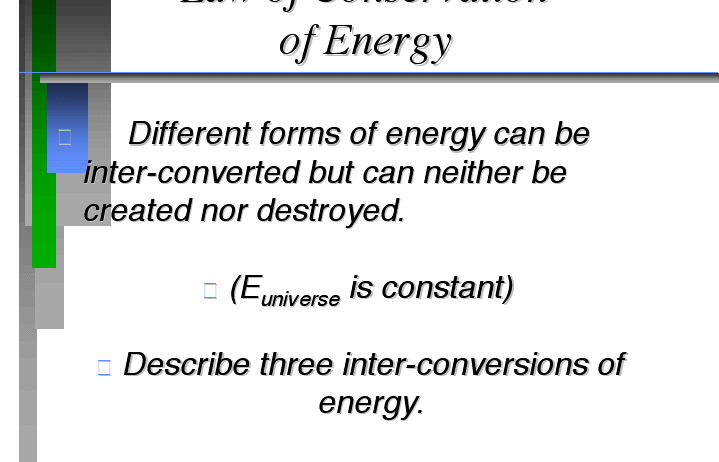The Law of Conservation of Energy and Matter is a foundational principle in the realms of physics and chemistry, encapsulating the idea that energy and matter cannot be created or destroyed, only transformed from one form to another. This principle not only underpins scientific inquiry but also has profound implications on environmental conservation, resource management, and sustainability. Understanding the inextricable link between energy and matter—and how they interact—can illuminate pathways toward more sustainable practices in modern society.
This essay aims to explore the essence of the Law of Conservation of Energy and Matter, its historical context, its application in various fields, and the broader implications for environmental activism and policy-making.
Historical Context
The Law of Conservation of Energy was formalized in the 19th century, emerging from the works of pivotal scientists like Thomas Young, Johannes Kepler, and later, Hermann von Helmholtz. The understanding that energy is neither created nor annihilated has been pivotal to advancements in thermodynamics and mechanics. In parallel, the conservation of matter can be traced back to Antoine Lavoisier, who famously asserted that in chemical reactions, the total mass remains unchanged, highlighting the inevitability of transformation rather than destruction.
Understanding Energy
Energy manifests in various forms, including kinetic, potential, thermal, and chemical energy. Each form can be converted to others through different processes. For instance, the chemical energy stored in fossil fuels can be converted into kinetic energy in automobiles. This distinction is crucial in comprehending real-world energy transitions—essential for the development of renewable energy technologies, such as solar and wind power, which seek to harness energy from natural processes.
The Role of Matter
Just as energy transitions from one form to another, matter undergoes transformations as well. The conservation of matter becomes especially evident in chemical reactions, where reactants convert into products, yet the total mass remains constant. This principle is essential for understanding the cyclical nature of ecosystems, where organic matter decomposes and rejuvenates the soil, enabling new life forms to flourish. Such insights are crucial in the discourse of sustainable agriculture.
The Interrelationship Between Energy and Matter
The interplay of energy and matter highlights a critical connection that affects our environment. For instance, during photosynthesis, plants convert solar energy into chemical energy, utilizing carbon dioxide and water—two forms of matter. The energy captured in this process sustains nearly all life on Earth, showcasing how energy transformations are intricately linked to matter. The recognition of this symbiosis stresses the value of protecting natural ecosystems, as their functionality is pivotal for maintaining energy balance.
Applications in Real Life
In practical terms, the conservation laws provide a framework for minimizing waste in various sectors. Industries aiming for sustainability can apply these principles to streamline processes, enhance efficiency, and reduce carbon footprints. For example, in manufacturing, understanding energy conservation can lead to innovations in energy-efficient machines, while knowledge of matter conservation can result in reduced material wastage.
Transportation systems also benefit from these principles. The shift towards electric vehicles reflects a broader understanding of energy conservation by utilizing stored electrical energy—when the battery is charged through renewable resources, the energy used is sourced sustainably. Moreover, advancements like regenerative braking in electric vehicles demonstrate a practical application of energy conservation, allowing systems to reclaim and reuse energy that would otherwise be lost.
Impacts on Environmental Policy
As awareness of climate change escalates, the implications of the Law of Conservation of Energy and Matter become increasingly relevant. Policymakers are now tasked with creating frameworks that not only recognize these laws but also promote their application in everyday practices. Incentives for renewable energy adoption, stricter regulations on waste management, and advocacy for circular economies are all manifestations of this understanding.
Moreover, the educational sector plays a pivotal role in instilling this knowledge in future generations. By integrating these principles into educational curricula, awareness can foster sustainable habits early on, contributing to a more informed and environmentally conscious populace.
The Path Forward
Ultimately, the Law of Conservation of Energy and Matter provides a crucial lens through which we can view our impact on the planet. By embracing these principles, society stands at the precipice of revolutionary change. Transitioning towards renewable resources, enhancing energy efficiency, and promoting sustainable practices are not merely idealistic goals but necessities underscored by scientific realities.
Conclusion
In conclusion, the Law of Conservation of Energy and Matter is more than a scientific principle; it serves as a guiding doctrine for environmental stewardship. The interconnectedness of energy and matter shapes our ecosystem, our technology, and our policies. By understanding and applying these laws, humanity can forge a sustainable path forward—one that respects the limits of our planetary systems while fostering resilience and regeneration. The challenge is not merely to acknowledge the conservation laws but to integrate them meaningfully into every facet of life, ensuring that energy and matter are used judiciously and sustainably for future generations.








